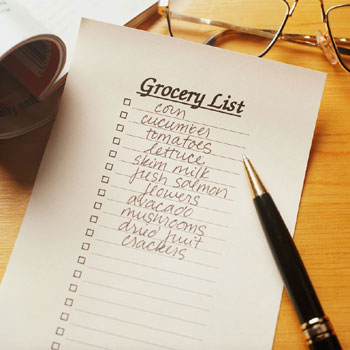Habits of Successful Weight Maintenance
If you are considering taking up the laudable task of improving your weight and body tone—or you’re currently in the process of doing so—you may find that it can be a very difficult, challenging process. “Eating better” sounds much easier than it really is, as successfully improving your weight and maintaining that improvement requires diligence and consistency.
Here are the eight steps that are crucial to achieving your health goals, and ensuring that you don’t lose your progress.
#1: Focus on Yourself
Take time to reflect on what may be bothering you in your life. What are your stressors? Identifying stressors and finding a healthy way to manage them that doesn’t involve food is critical. It will be very hard for you to achieve your goals if you try to turn a blind eye on everything else going on in your life. Negative emotions are often the root cause of unhealthy behaviors—whether they have caused you to stress eat, rely on food as a source of comfort, or sulk away the day in your bedroom. You must be able to confront these issues head on, and prove to yourself that they don’t control you.
#2: Mindful Eating
Don’t eat in response to stress or other negative emotions. Be mindful of every piece of food you prepare and eat. Appreciate the flavor and texture of every single bite. Try to never eat in front of a screen—such as your phone or television—as that will distract you from the food and lead you to overindulge. Secondly, never rush through your meals. This can create an unhealthy relationship with food and even cause hormone imbalance, causing you to not feel fully satiated.
#3: Track Your Food Intake
Multiple studies have shown that tracking your daily food intake increase weight loss success, as you are able to quickly identify dietary errors and hold yourself accountable. There is a multitude of options for easily tracking food intake. You can take the low-tech approach and simply use a journal, or you can opt to use a note taking application on your phone. However, I would strongly recommend using MyFitnessPal. MyFitnessPal is the largest and most user-friendly food tracking system I have come across. It features 5,000,000 pre-defined food choices that you can add into your daily dairy with the click of a button, automatically updating your calorie count for the day.
#4: Set Your Environment for Success
How much more likely would you be to grab a snack conveniently stocked in your cabinet, versus driving out to buy something? If you clear your fridge, freezer, and cabinets of tempting, unhealthy food options, then you are much less likely to succumb to your cravings for fast food or snack food. Yes, you may be feeling motivated and sure of yourself right now, but one bad day can make you much more vulnerable to temptation.
#5: Don’t Do It Alone
Surround yourselves with others who have similar goals, or who will support you through your dietary journey. You are much more likely to stay committed and stick to your plans if you don’t do it alone. Making big changes is never easy. That is why it is necessary to have support. You’ll often find yourself wanting to give up, but you’ll be able to withstand these doubts when you have the support of others to fall back on.
#6: Portion Control

#7: Exercise. Exercise. Exercise.
Make exercise part of your daily routine. I’m not asking you to participate in intensive CrossFit classes or take up parkour, but do what works best for you. Do you enjoy walking, biking, swimming, hiking, or going to the gym? Then start doing it every day. And if you don’t know what activities you love then take the time to discover what you do like. Whatever exercise you choose, I recommend dedicating at least 30 minutes to it, 5 days a week. The higher the intensity and heart rate, the better.
#8: Making Plans and Creating Habits
Fitness begins and ends with plans. You won’t last long if you don’t plan first, and stick with your plans long enough to turn them into habits. Recent research has shown that habits take an average of 66 days to become a concrete part of daily routine. So, it takes time. In the meantime, plan plan plan. Plan what you are going to eat this week, when you are going to exercise, what you are going to cook for dinner, and what you are going to buy at the grocery store. Take a few minutes to write up your plans, and share it with a friend or loved one who will hold you accountable.
All of this may sound intimidating, and even exhausting, but adopting healthy lifestyle habits is a process. It takes dedication and persistence. But if you stick with it, you’ll discover that you love how you feel, and that you have the strength to achieve your weight loss goals.
This article is contributed by Spencer Safty, River Bend Medical Associates’ Clinical Nutritionist.


